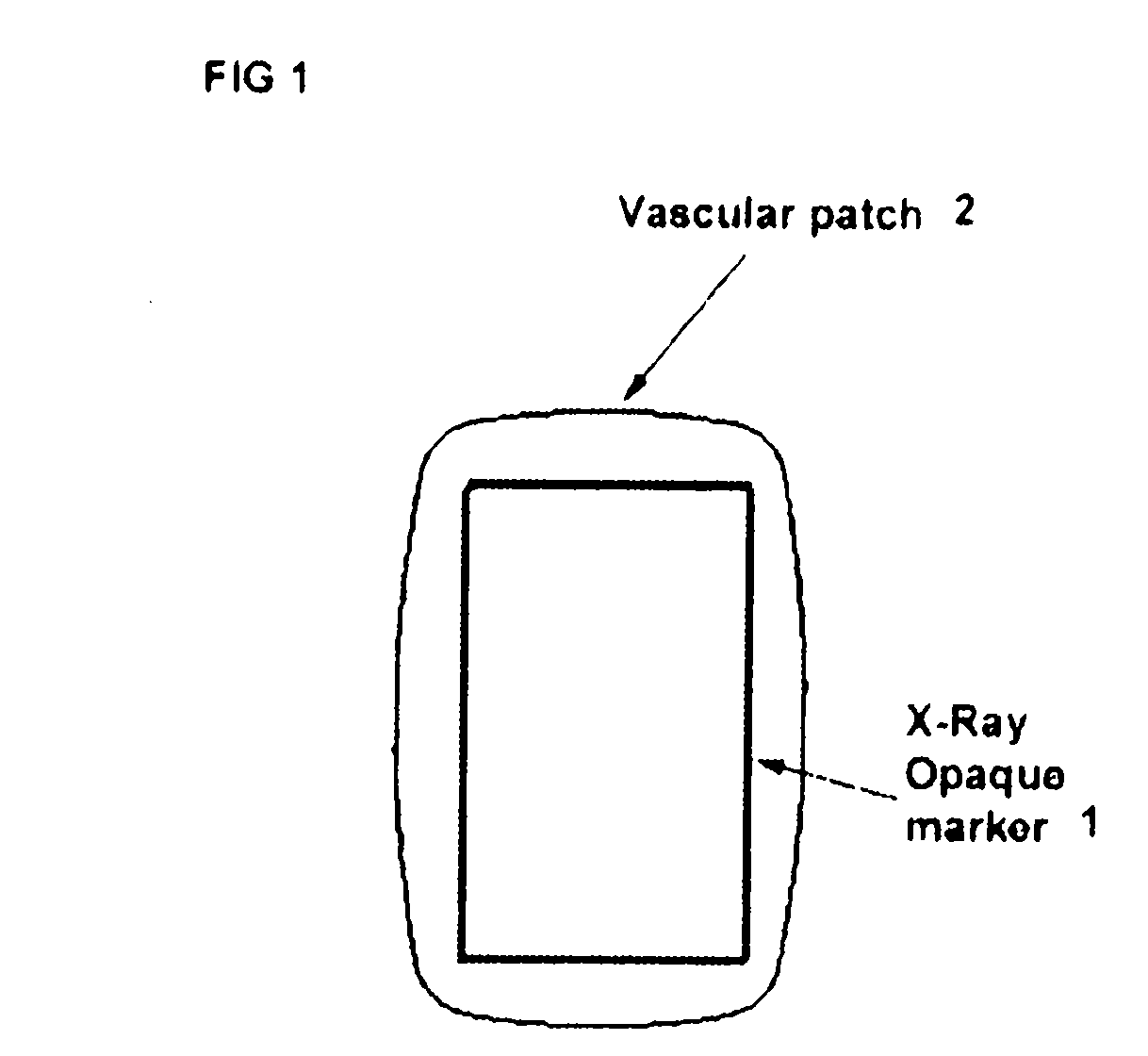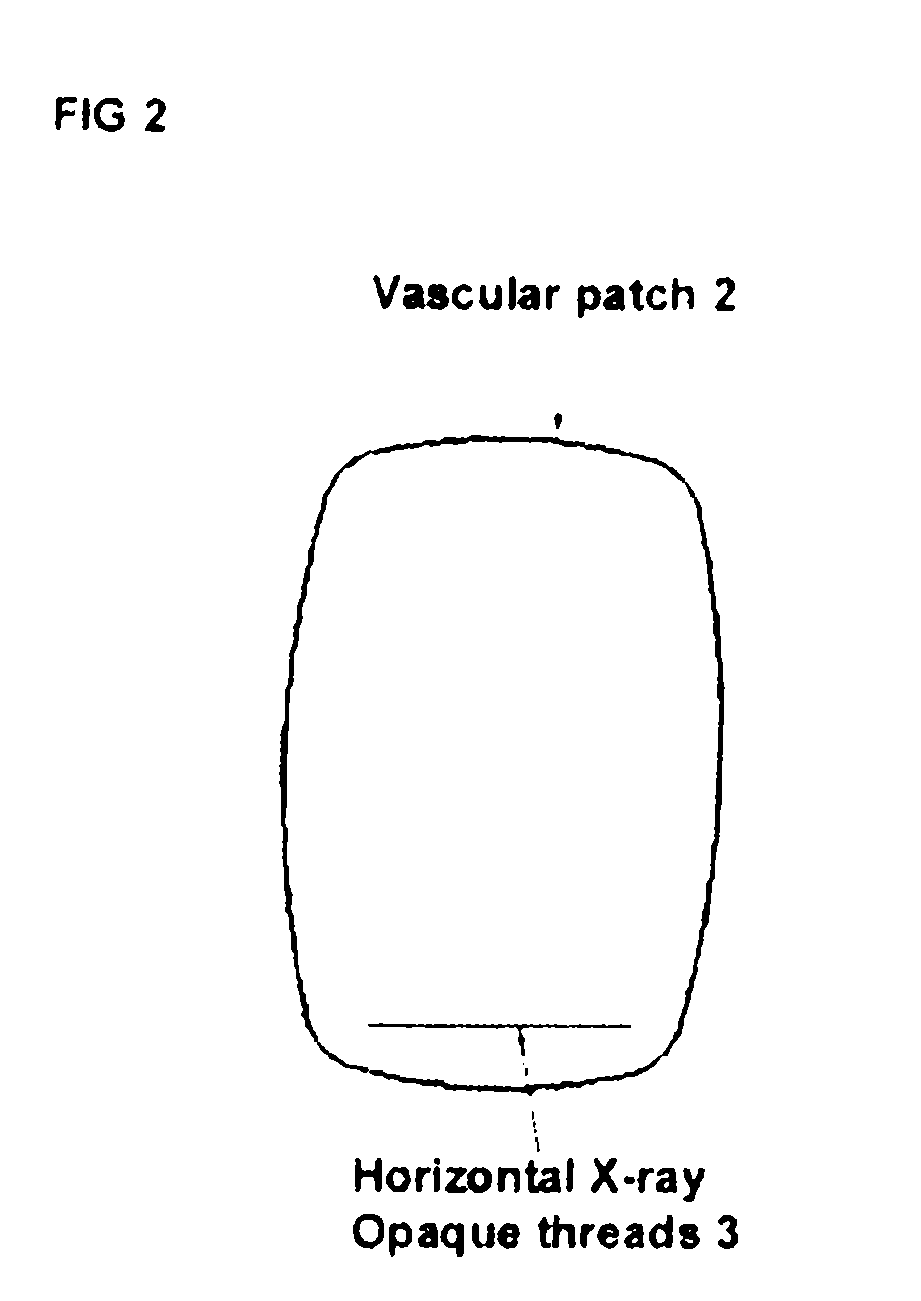Labeled vascular patch
a vascular patch and labeling technology, applied in the field of labeling vascular patches, can solve the problems of restenosis or occlusion of the patched blood vessel segment occlusion, complex reinvestigation,
- Summary
- Abstract
- Description
- Claims
- Application Information
AI Technical Summary
Benefits of technology
Problems solved by technology
Method used
Image
Examples
Embodiment Construction
[0016]The detailed description of exemplary embodiments of the invention herein, shows various exemplary embodiments and the best modes, known to the inventors at this time. These exemplary embodiments and modes are described in sufficient detail to enable those skilled in the art to practice the invention and are not intended to limit the scope, applicability, or configuration of the invention in any way. Rather, the following disclosure is intended to teach both the implementation of the exemplary embodiments and modes and any equivalent modes or embodiments that are known or obvious to those of reasonable skill in the art. Additionally, all included figures are non-limiting illustrations of the exemplary embodiments and modes, which similarly avail themselves to any equivalent modes or embodiments that are known or obvious to those of reasonable skill in the art.
[0017]As such, the present invention relates generally to a labeled vascular patch for locating the patch at a post-ope...
PUM
 Login to View More
Login to View More Abstract
Description
Claims
Application Information
 Login to View More
Login to View More - R&D
- Intellectual Property
- Life Sciences
- Materials
- Tech Scout
- Unparalleled Data Quality
- Higher Quality Content
- 60% Fewer Hallucinations
Browse by: Latest US Patents, China's latest patents, Technical Efficacy Thesaurus, Application Domain, Technology Topic, Popular Technical Reports.
© 2025 PatSnap. All rights reserved.Legal|Privacy policy|Modern Slavery Act Transparency Statement|Sitemap|About US| Contact US: help@patsnap.com



